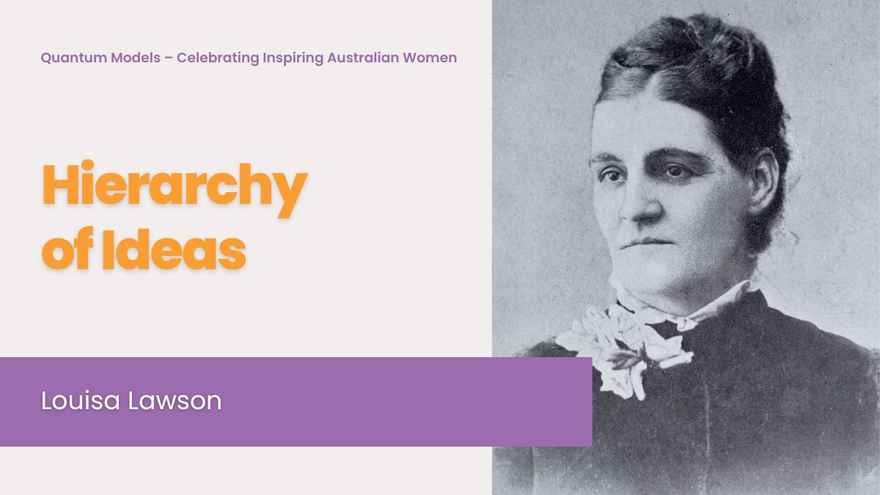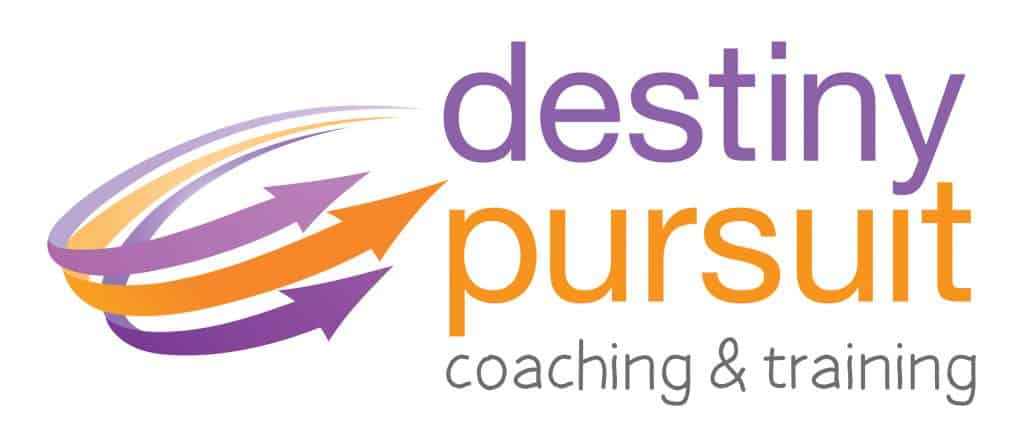Hierarchy of Ideas - Louisa Lawson

As a mum of four I cannot count the number of times I have thought that I have communicated clearly with my children only to discover later that what I thought I said, and what they thought I said were two totally different things! And of course these cross-wired conversations are not restricted to talking with our children, there are whole libraries filled with books about miscommunication between women and men; bosses and staff; countries, cultures, religions.
At times of change the art of communication can prove particularly challenging. And yet, if we look into our past, there are many examples of excellence for us to model, examples where through masterful communication we have seen big changes. With NLP we now have the ‘technology’ to analyse and uncover the patterns and structure intrinsic to this successful communication. And once we know the pattern then we can use it to design new messages.
Because as we know already, our success in all aspects of life pretty much depends on our ability to communicate effectively, and it was precisely this ambition to ensure women could have a voice and communicate effectively that became Louisa Lawson’s life’s purpose.
Louisa Lawson
In the 1860’s Australian women were pioneers of the land. On average an Australian woman gave birth to 7 children and in addition to running the household they worked long hours sewing, laundering and doing other paid work to provide essential income for their family. Yet at this time women had few rights – they were not considered legal guardians of their own children, could not own land and of course did not have the right to vote. Many women recognized the desperate need for change yet without organization, without the capacity to communicate as a group and without the right to influence law and policy makers through voting they remained powerless.
Louisa was the second of twelve children and her parents struggled to provide life’s necessities. As a result of her academic ability whilst a student at Mudgee National School she was offered the opportunity to become a student-teacher. However, as an older girl in a large family her role as carer for the younger children was considered indispensable and she was consequently stuck in the drudgery of assisting at home. No doubt this experience drove her in her later life when she urged parents to equip daughters to earn a living and not keep them home as domestic servants.
Louisa was married at 18 and within 10 years she had 5 children (one of whom died in infancy). Louisa worked as a seamstress and at the post office supporting her family. In 1883 she moved her family to Sydney and continued to work supplementing her seamstress income by taking in boarders. Louisa knew her story was common; many women were left alone to work and raise large families with little or no support from their husbands. In Sydney she formed friendships and met other women who, like her, questioned the inequalities that every Australian woman was experiencing.
“Who ordained that men should make the laws that both women and men must obey?” she asked.
And in October 1888, on the fire of her passion Louisa Lawson established the first journal for Australian women, ‘The Dawn’. From the outset the purpose of ‘The Dawn’ was to be the voice of women, their journal, their mouthpiece. ‘The Dawn’ was an instant success, with a team of 10 women and the widest possible distribution it sent shock waves through the establishment. ‘The Dawn’ was born into an Australia that was striving to become a self-governing nation and into this dialogue Louisa Lawson embedded the desire to bring with new nationhood, a new womanhood. By addressing issues such as domestic abuse, divorce and women’s legal rights at last Australian women had a newspaper unlike any other, a newspaper that spoke to and of them.
With a perfect balance of detailed articles on household hints, editorials and support for the suffrage cause (giving women the right to vote) ‘The Dawn’ achieved a subscription of more than 1000 across the world running fortnightly for 17 years. The art of Louisa’s communication captured a wide audience because in her journal she ensured a combination of specific detail (HOW to, hints and tips) that would alleviate women from some of their day-to-day drudgery. Then there were articles about WHAT were the current issues and inequalities that Australian women shared as common experiences (poor wages; lack of rights to property, children, protection from violence; no right to divorce; exclusion from higher education). Finally the core of women’s powerlessness to effect change was identified, the big WHY we are in the position we are in, no voting rights, was emphasized repeatedly:
“Women’s opinions are useless to her, she may suffer unjustly, she may be wronged, but she has no power to weightily petition against man’s law, no representatives to urge her views, her only method to produce release, redress or change is to ceaselessly agitate.”
Louisa Lawson as a resolute advocate for the rights of women in Australia used the written word to paint a vivid portrait of Australian life whilst she ceaselessly agitated and challenged corrupt authority. This unwavering resolve to stand strong, reach her goal and “lead the way” by pointing out the flaws in society led her to establish the Dawn Club. Here she created a space for women to gather and again work across the hierarchy of ideas necessary to achieve their overall purpose. At the Dawn Club women practiced HOW to present speeches that addressed the major issues of the time (WHAT mattered). Soon, the group became the centre for the New South Wales Women’s Suffrage League. The Dawn Club became one of the few safe spaces where the League could express their opinions and fight for their cause, their ultimate why.
This was a time where many noble and great ideas were being discussed as the colonies worked their way through the process of becoming one nation, through Federation. Frustratingly for Louisa Lawson and her fellow suffragettes a woman’s right to vote would not initially be included at Federation in 1901. However, after years of fighting for the right to vote, the Womanhood Suffrage Bill passed through the national parliament in 1902, only one year later.
Louisa Lawson is the person to whom every Australian woman owes a debt of gratitude, for it is because of her mastery over both the means and the mode of communication that we secured the right to vote as equals.
Louisa’s success depended on her ability to communicate effectively. Communication mastery means having the behavioral flexibility to first match someone’s communication level (such as Louisa did) and then lead the communication through and across the different levels. She addressed the specific mundane day-to-day details of women’s work (how to repair clothing, knit, clean efficiently) and then moved up a level to other shared experiences (the inequalities, injustices and discrimination that women confronted each day) and finally she moved into the big picture (no voting rights for women meant they didn’t have the capacity to directly impact policy, legislation and achieve equality).
In NLP we refer to this structure of moving from small details to bigger and bigger picture, back again and across levels as the “Hierarchy of Ideas” and now that we know the pattern we can use it to design and master our own communication, weaving a tapestry of choice, building capacity and skills for influencing others and staying focused on the ultimate purpose.
Make today your day,
Cheers, Joanne
Joanne Clark
Joanne Clark is an Internationally accredited Master Trainer of NLP who has been delivering NLP training since 2011. Being on her feet in front of training rooms is where Jo loves to be and her passion for inclusive and immersive training that delivers outstanding learning outcomes is apparent to everyone in her training rooms. On average Jo delivers 140 days of training per year in addition to online webinars, guest speaker events and group coaching.
“NLP is at the core of all my training and coaching, it is at the core of who I am, how I interact and connect with people. I am absolutely passionate about spreading the NLP tools across the planet as I endeavour to support Robert Dilts’s vision of Creating a world to which people want to belong.” Joanne Clark
Certified Master Trainer of NLP; Master Practitioner NLP, Hypnotherapy & Matrix Therapies; Performance Coach; Cert IV Coaching; Advanced Practitioner in Coaching; Cert IV in Business; BA(Hons); Majors in Sociology and Psychology; Parent Education Leadership Training (PELT) Certificate; Mother of four children; Private Pilot (PPL); Diploma in Life Coaching


0 comments
Leave a comment
Please log in or register to post a comment